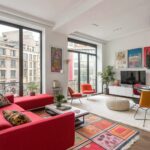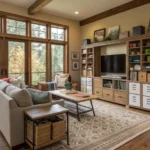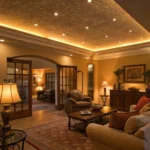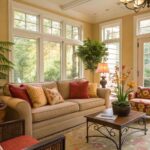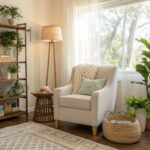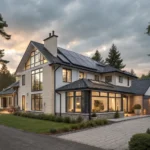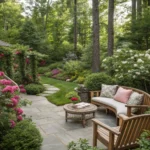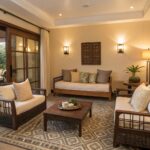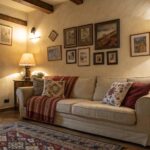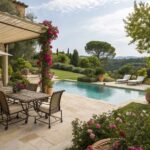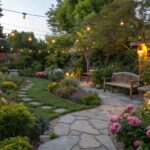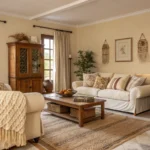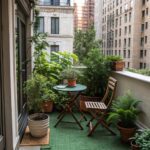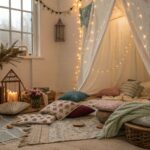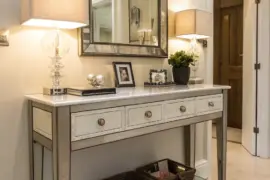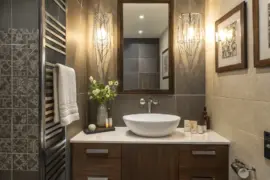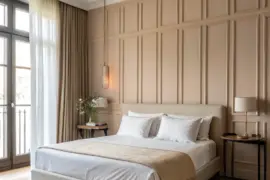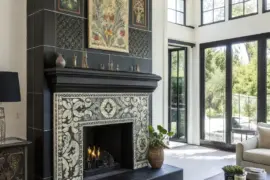In today’s bustling household dynamics, creating dedicated personal spaces has become essential for mental wellness and family harmony. This comprehensive guide explores proven strategies for establishing intimate retreats within active family environments, drawing from psychological principles and practical design solutions.
Understanding the Psychology of Personal Space
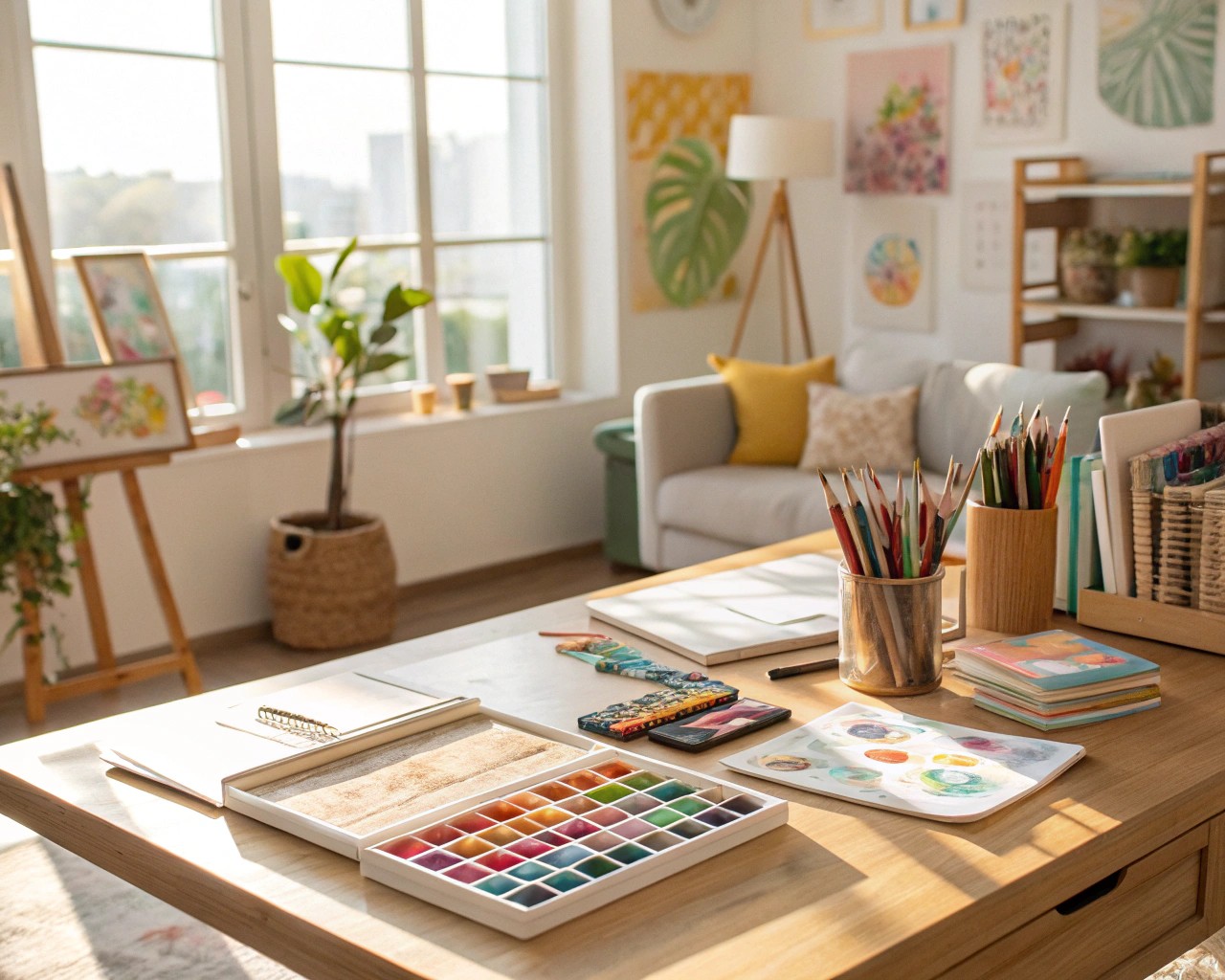
The human need for territorial control and privacy significantly impacts our psychological well-being and behavior patterns. When individuals can personalize their environment and designate zones for specific activities, they experience greater satisfaction with their living conditions. Research demonstrates that spaces designed with psychological principles can substantially improve occupants’ performance, efficiency, and overall mental state.
The Science Behind Sanctuary Spaces
Environmental psychology reveals how our surroundings directly influence our emotions and behaviors. Lighting, colors, configuration, scale, proportions, and materials all address our senses and generate specific feelings and practices. Creating personal corners leverages these principles by establishing what researchers call “defensible spaces”—areas where individuals feel secure and maintain control over their immediate environment.
Consider these key psychological benefits:
- Stress reduction through territorial control
- Enhanced creativity in personalized environments
- Improved focus and productivity
- Better emotional regulation
- Strengthened sense of identity and belonging
Strategic Location Assessment for Personal Corners
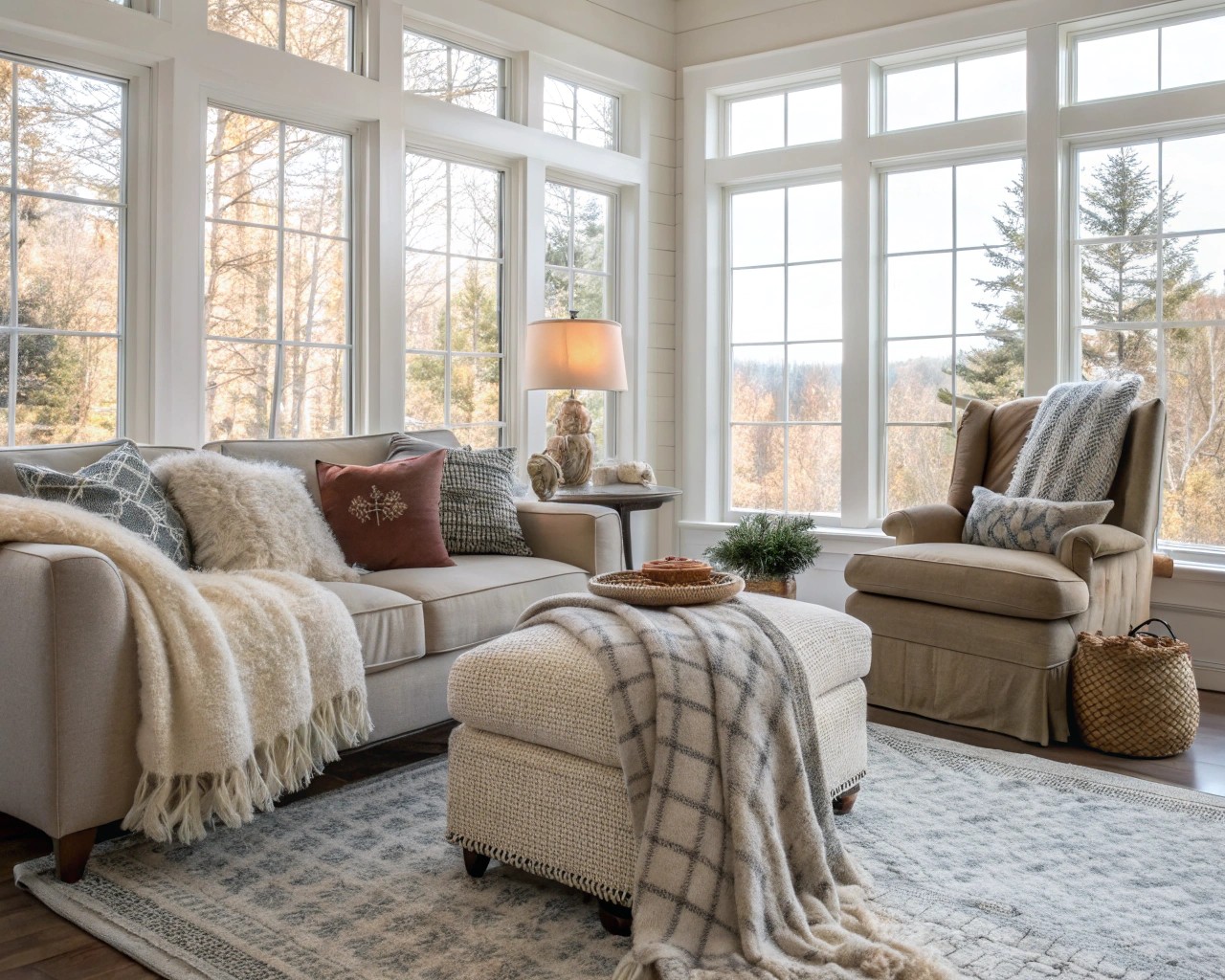
Before establishing any personal retreat, conduct a thorough spatial analysis of your home’s potential. The most successful personal corners emerge from careful consideration of existing traffic patterns, natural light sources, and acoustic properties.
Indoor Corner Evaluation Criteria
| Location Factor | Optimal Conditions | Adaptation Strategies |
|---|---|---|
| Natural Light | South or east-facing exposure | Add mirrors, light-colored surfaces, LED strips |
| Acoustic Privacy | Away from high-traffic areas | Install sound-absorbing materials, use white noise |
| Proximity to Utilities | Near electrical outlets | Use extension cords, battery-powered lighting |
| Traffic Flow | Low-movement zones | Create visual barriers, position furniture strategically |
I’ve observed that corners near windows consistently perform best for reading nooks and meditation spaces, as natural light naturally regulates circadian rhythms and enhances mood. The presence of natural light increases serotonin levels, which helps reduce anxiety and depression.
Indoor Personal Corner Solutions
The Classic Reading Retreat
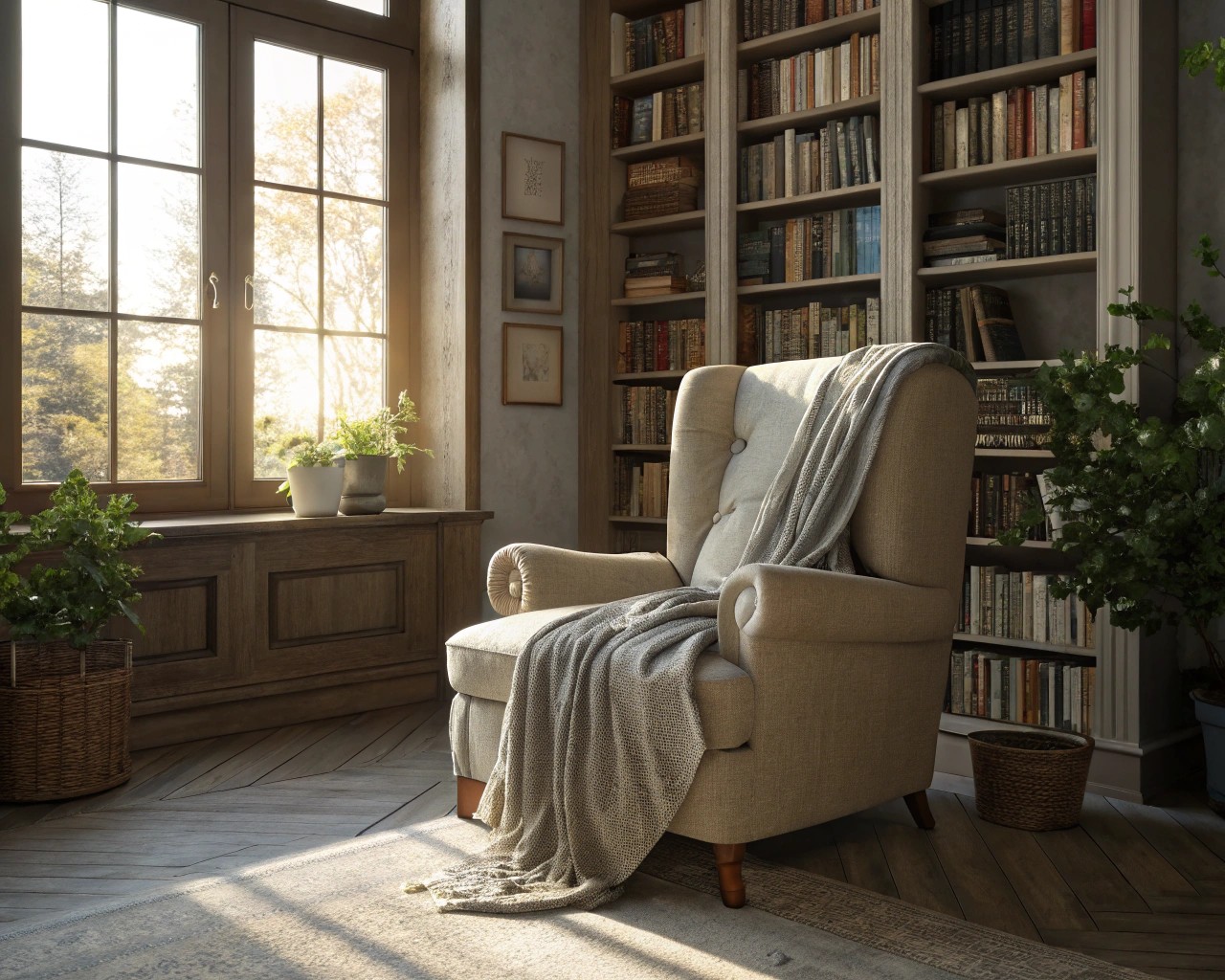
Transform any underutilized corner into a sophisticated reading sanctuary using these essential elements:
Core Components:
- Comfortable seating (armchair or built-in cushioned area)
- Adequate task lighting (floor lamp or wall-mounted fixture)
- Small surface for beverages and books
- Soft textiles for warmth and comfort
A successful reading corner requires minimal square footage—as little as 4 feet by 4 feet can accommodate a comfortable chair and side table. For apartment dwellers, consider claiming one end of an existing sofa and adding a dedicated side table stocked with your current reading selections.
Lighting Strategy:
Position your reading light to eliminate shadows on your book pages. I recommend adjustable floor lamps with warm LED bulbs (2700K color temperature) for evening reading sessions. During daylight hours, position seating perpendicular to windows to minimize glare while maximizing illumination.
Productive Work Nooks
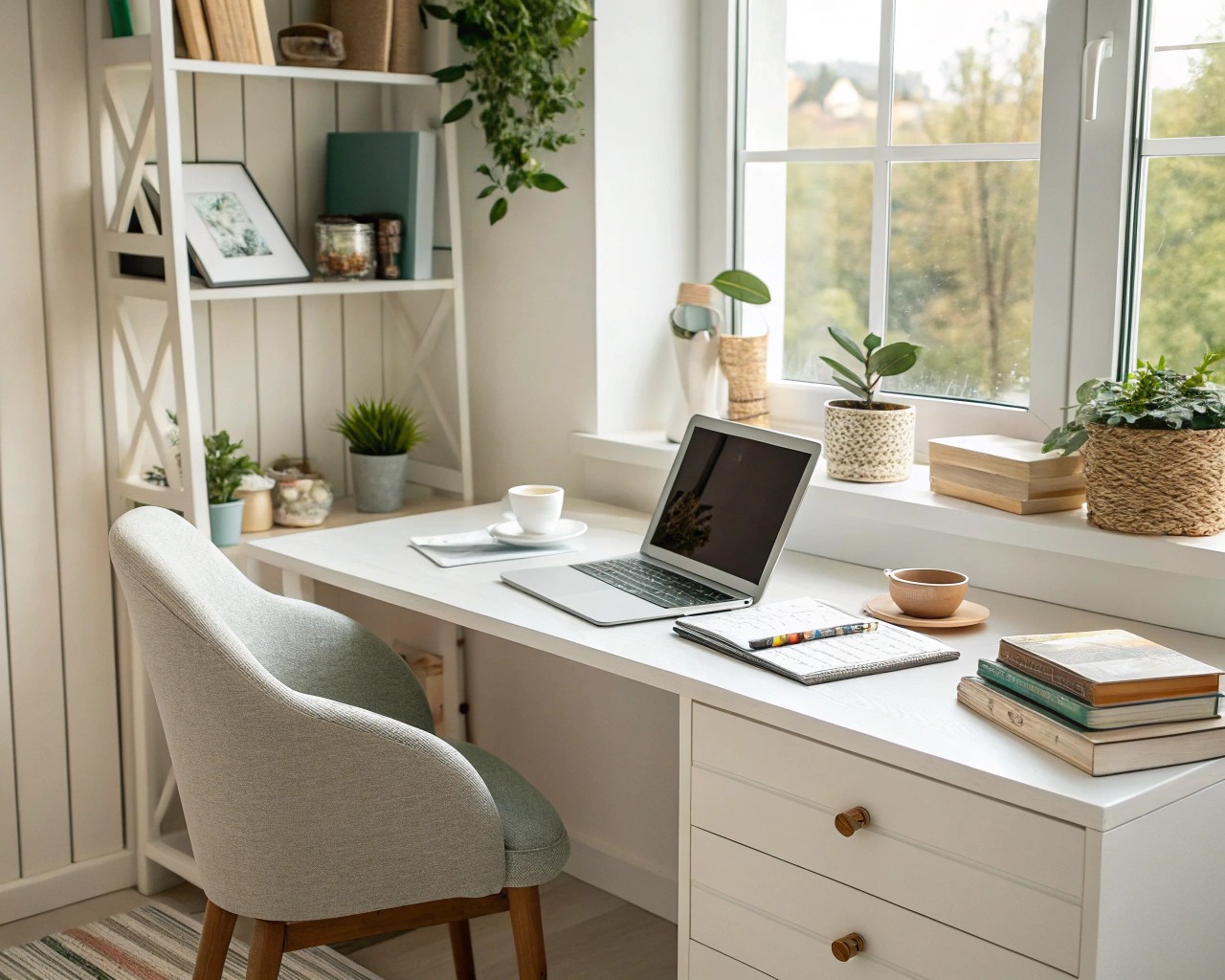
Corner desk installations offer ingenious solutions for creating dedicated workspace without sacrificing valuable floor area. Wall-mounted corner desks work particularly well in small spaces, supporting typical office equipment while maintaining clean sightlines.
Floating Corner Desk Specifications:
- Load capacity: 40-60kg (sufficient for laptop and monitor setup)
- Optimal mounting height: 28-30 inches from floor
- Surface depth: 20-24 inches minimum
- Wall mounting requirements: Solid wall construction (not drywall alone)
For families with children, integrate study nooks into living spaces using custom cabinetry that conceals work materials when not in use. This approach maintains the room’s primary function while providing dedicated learning zones.
Meditation and Mindfulness Corners
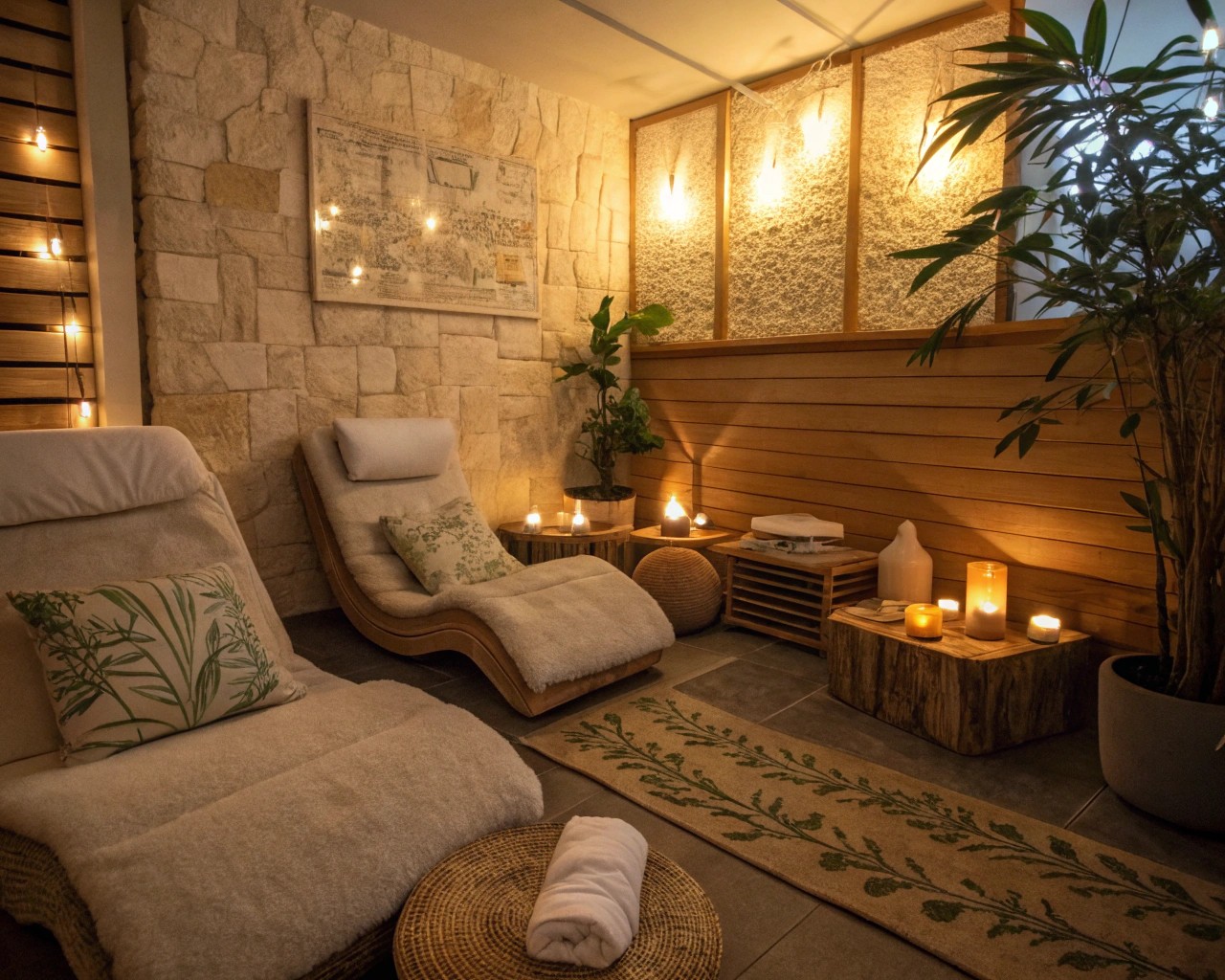
Designate floor-level spaces for grounding practices using minimal interventions. A simple yoga mat or soft rug creates an immediate boundary that signals transition from daily activities to personal reflection time.
Essential Elements:
- Dedicated floor covering (yoga mat, small rug, or cushions)
- Clear sightlines to avoid visual distractions
- Aromatherapy integration (essential oil diffuser)
- Sound management (soft background music or silence)
Position meditation corners away from main foot traffic while maintaining connection to natural elements when possible. A view of plants or outdoor scenery enhances the calming effect.
Outdoor Personal Retreat Spaces
Garden Privacy Solutions

Creating outdoor personal spaces requires strategic screening and microclimate management. Pergolas with adjustable side panels offer versatile privacy control while maintaining airflow and natural light penetration.
Pergola Privacy Enhancement:
- Side panels with adjustable louvers for light and airflow control
- Heat-treated wood or aluminum construction for durability
- Positioning to maximize morning sun exposure
- Integration with existing landscape elements
I’ve found that even modest outdoor spaces can accommodate intimate seating areas when properly planned. A corner measuring 6 feet by 8 feet provides adequate room for two comfortable chairs and a small side table.
Compact Backyard Nook Design
Transform underutilized outdoor corners using these evidence-based strategies:
Site Selection Criteria:
- Morning sun exposure with afternoon shade
- Protection from prevailing winds
- Visual separation from neighbors
- Proximity to house for convenience
Furniture Selection Guidelines:
- Weather-resistant materials (teak, all-weather wicker, aluminum)
- Comfortable proportions for extended use
- Seasonal storage capabilities
- Multi-functional pieces (storage ottomans, convertible tables)
Consider adding soft landscape elements like ornamental grasses or small shrubs to create natural boundaries without rigid walls. These living screens provide privacy while maintaining connection to the broader garden environment.
Implementation Strategy and Timeline
Phase 1: Planning and Preparation (Week 1-2)
Space Assessment:
1. Measure potential corner dimensions
2. Evaluate existing lighting conditions
3. Identify electrical outlet locations
4. Assess storage requirements
5. Consider seasonal usage patterns
Budget Allocation Guidelines:
- 40% – Primary seating or work surface
- 25% – Lighting solutions
- 20% – Storage and organization
- 15% – Soft furnishings and accessories
Phase 2: Infrastructure Installation (Week 3-4)
Begin with electrical and lighting improvements, as these modifications often require professional installation. Wall-mounted desk systems and built-in storage solutions should be completed before adding furniture and decorative elements.
Professional vs. DIY Considerations:
- Electrical work: Always use licensed electricians
- Wall mounting: Verify wall construction and load requirements
- Built-in cabinetry: Consider contractor consultation for complex installations
- Painting and soft furnishings: Suitable for DIY completion
Phase 3: Furnishing and Personalization (Week 5-6)
Layer furniture, textiles, and personal accessories to create the desired atmosphere. Start with larger pieces and gradually add smaller elements, allowing time to assess each addition’s impact on the overall space function.
Adaptation Strategies for Different Home Types
Small Apartments and Condominiums
Maximize limited square footage through multi-functional design solutions. Ottoman storage provides seating while concealing books, blankets, or work materials. Wall-mounted floating desks preserve floor space while providing adequate work surfaces.
Space-Saving Techniques:
- Vertical storage solutions
- Fold-down work surfaces
- Multi-purpose furniture
- Mirror placement for visual expansion
Large Family Homes
Establish multiple personal corner types throughout different zones to accommodate varying family needs and schedules. Designate quiet corners in bedrooms for private reading, while creating collaborative study nooks in common areas.
Zone Distribution Strategy:
- Master bedroom: Adult relaxation corner
- Children’s rooms: Individual study/creative spaces
- Living areas: Family reading nook
- Kitchen: Coffee meditation spot
- Outdoor areas: Garden retreat corner
Multi-Generational Households
Address diverse accessibility and comfort requirements through inclusive design principles. Ensure seating options accommodate different mobility levels, and provide adjustable lighting for varying visual needs.
Seasonal Adaptations and Maintenance
Personal corners require ongoing adjustment to maintain their effectiveness throughout changing seasons and life circumstances. Outdoor spaces particularly benefit from seasonal furniture rotation and protection strategies.
Winter Adaptations:
- Add warm textiles and throws
- Increase artificial lighting duration
- Introduce aromatherapy for mood enhancement
- Protect outdoor furniture or relocate indoors
Summer Modifications:
- Implement cooling strategies (fans, shade solutions)
- Adjust outdoor corner positioning for optimal comfort
- Introduce seasonal plants and flowers
- Extend usage hours with proper lighting
Measuring Success and Making Adjustments
Evaluate your personal corner’s effectiveness through regular usage assessment and comfort analysis. Successful personal spaces should feel naturally inviting and support their intended activities without requiring conscious effort to utilize.
Success Indicators:
- Consistent daily or weekly usage
- Positive mood association with the space
- Effective functionality for intended activities
- Easy maintenance and upkeep
- Family respect for designated personal time
Monitor usage patterns over the first month and make incremental adjustments to improve comfort and functionality. Small modifications often yield significant improvements in space satisfaction and utilization rates.


